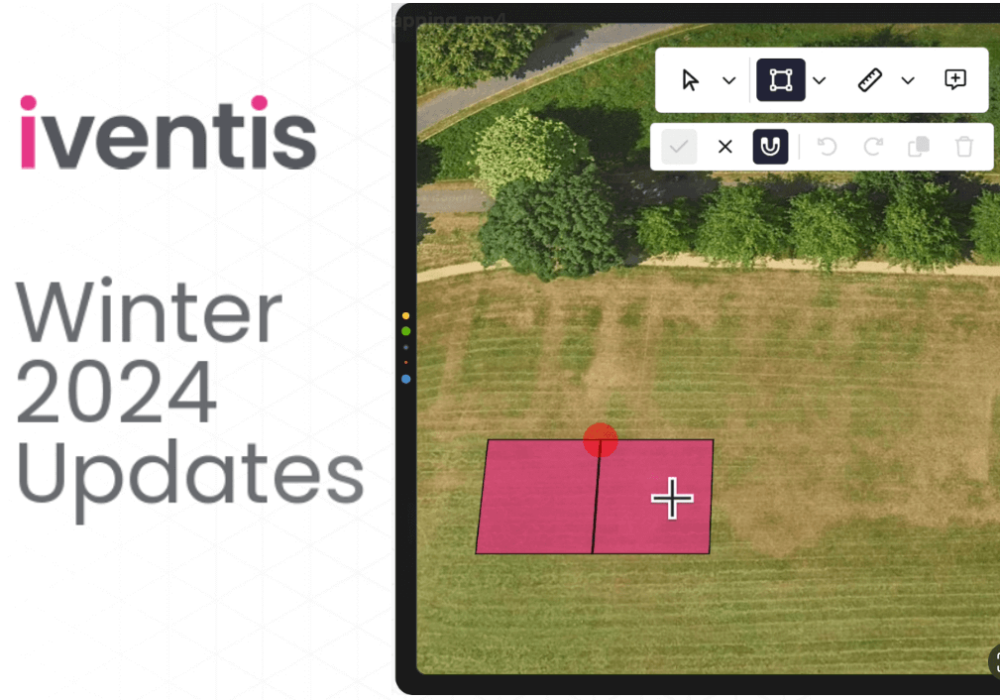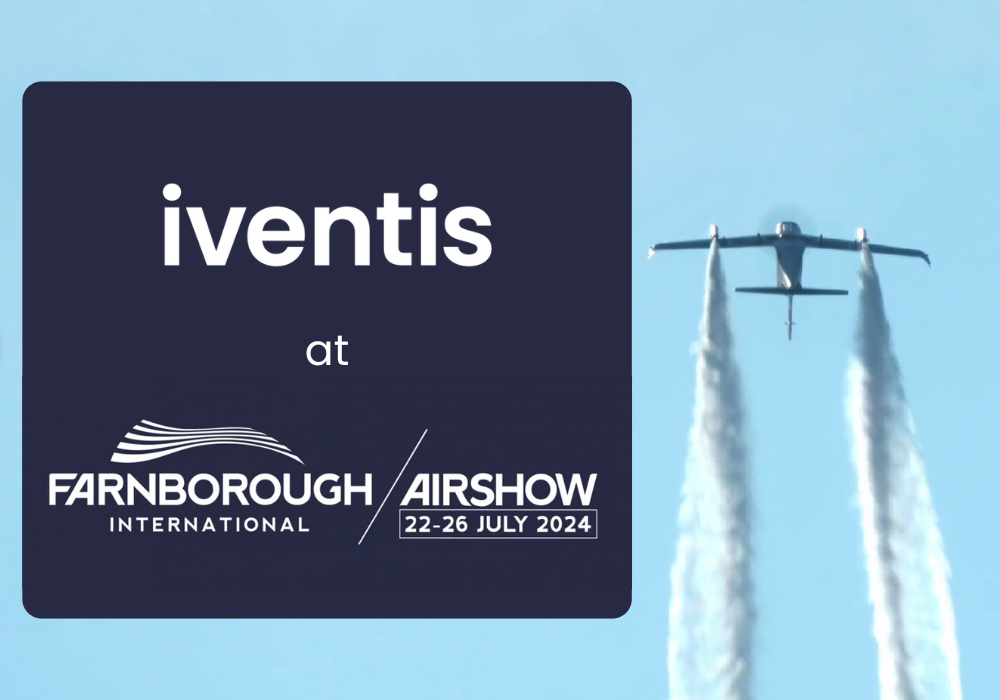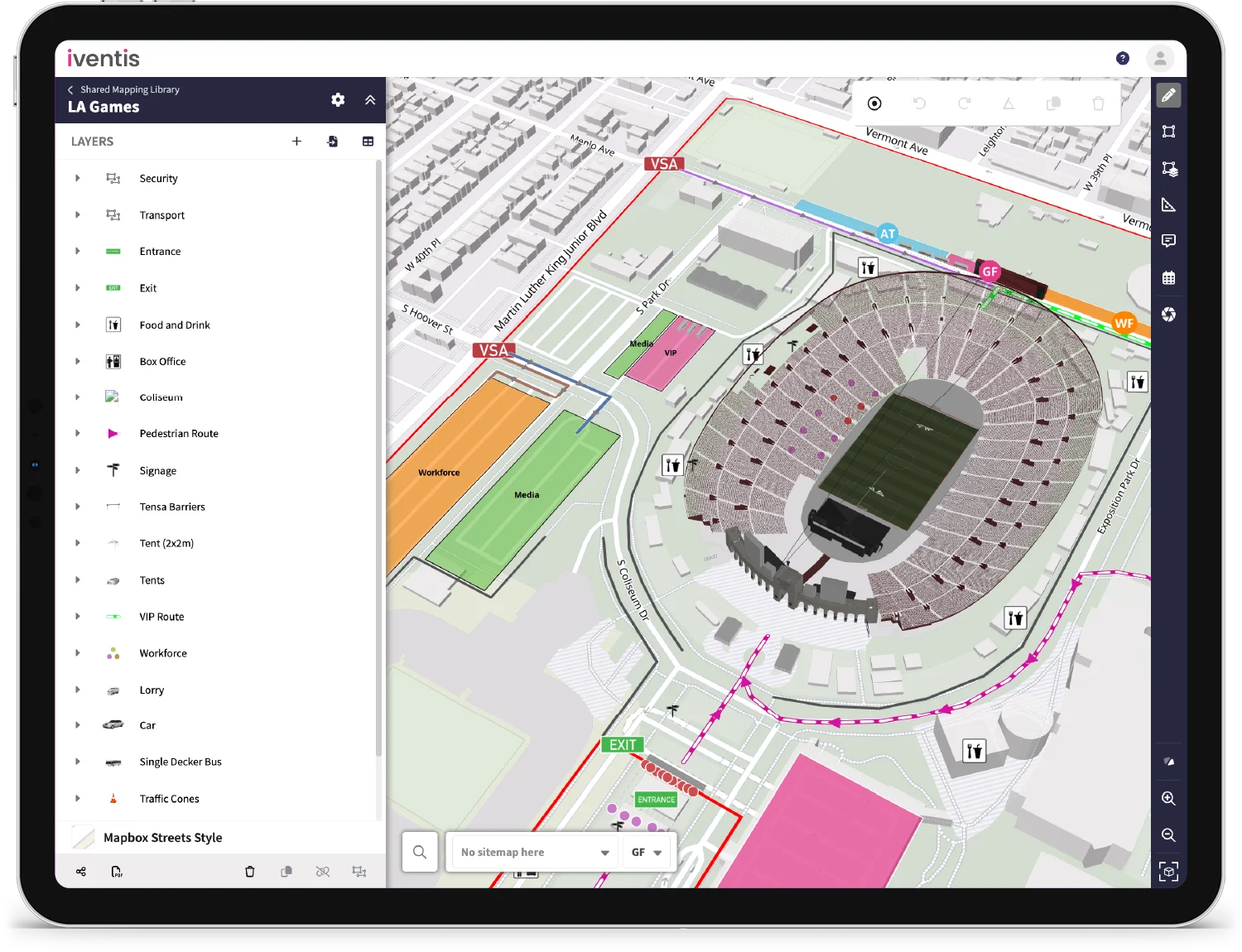The Impact, Benefits, and Processes of Event Workforce Planning
For any event, the workforce is one of the most important assets and crucial for success. A well-organised, memorable event needs more than operational planning – it requires a skilled, efficient and considered team to deliver it. Therefore, a strategic approach to creating and managing your workforce is crucial for both tasks to run smoothly and for the overall success of the event.
In this blog, discover the intricacies of workforce planning in the events industry and how strategically organising your team can significantly impact your event. Learn how your workforce can lead to improved efficiencies, cost savings and an enhanced experience for both organisers and attendees. Plus, explore some successful workforce planning methods, and how you can use them to build the ideal workforce for your event.
If you’re looking for templates, examples and checklists to ensure your workforce plan is robust, check out this blog for valuable resources.
What is meant by workforce planning?
Workforce planning refers to the process of analysing your workforce requirements, forecasting the necessary personnel, and planning supply. This includes analysing supply and demand dynamics, identifying skill gaps, and selecting the right individuals to ensure tasks are carried out effectively and efficiently.
Workforce planning is an important part of every industry, but the many moving parts involved in event organisation make it critical that the workforce is well-planned and executed from the start.
Who is responsible for workforce planning?
The responsibility of workforce planning is not necessarily assigned to just one person, and those responsible might change from event to event. Large events are likely to require a designated workforce manager, who deals with the strategic and operational requirements of large-scale event workforce management. However, a smaller event might not need a dedicated manager, and the workforce might instead be controlled by the organiser, organising committee or an operations manager.
What does an effective workforce look like?
At its core, an effective workforce ensures all necessary tasks for the event’s success are covered. However, there’s more to it than simply ensuring task completion. The workforce should be planned in a manner that facilitates collaboration, communication, adaptability, and clarity. These factors should be present across the entire workforce, from senior management to voluntary personnel.
Some of the key indicators of an effective workforce include:
- Clear communication. Effective communication is crucial for any team, and a good representation of a healthy workforce. Communicative teams can avoid misunderstandings, enhance collaboration, and minimise inefficiencies by ensuring that everyone is on the same page.
- Flexibility. The events industry is ever-changing, and there are likely to be several unexpected challenges that come with planning an event. A well-planned workforce is prepared for this and provides the adaptability to respond to changes quickly.
- Leadership. The leaders within your team play a significant role in guiding and shaping the workforce. Choosing qualified, empathetic, and organised leaders is crucial for creating an inspired and effective workforce.
- Diversity. A diverse workforce creates different viewpoints within the team, strengthening the workforce. However, diversity also refers to skill diversity – your workforce should possess a wide range of expertise across the individual team members.
- Engagement. Workers are more likely to be engaged in a well-planned, complete team. Engaged employees are committed to their work and the goals of the event. This leads to better job satisfaction, increased productivity, and a more positive work environment.
- Efficiency. When a workforce is developed strategically, it is more efficient. Each part of the team is appropriately qualified to do their job, informed about the event and its parameters, and working collaboratively to get tasks done quickly and efficiently.
These are some of the most common attributes of an effective workforce, but they are by no means exhaustive. Since event has its own unique priorities and structures, it’s important to communicate with your workforce throughout the event’s planning process to maintain oversight of your team’s effectiveness.

Key principles of workforce planning
The importance of workforce planning is clear, but what does it entail in practice? To delve deeper into the intricacies of workforce planning, explore our blog.
There are five fundamental principles that should be considered for every event. As each event is different, emphasis on each each factor of the process may differ. However, each principle retains its importance and should be thoroughly examined as part of the workforce planning process.
Supply
In workforce planning, supply refers to the existing talent pool at your disposal. For event organisers, that may consist of full-time staff, committee members, or project associates. Understanding the skills and qualifications offered by these individuals is crucial, as it allows you to identify positions that are already filled.
However, due to the contingent nature of the events industry, most industry professionals work on a freelance basis. In these circumstances, the majority of your workforce will come from the second stage of workforce planning.
Demand
Once you assessed your supply, all other personnel required for your event represent the demand. This is your anticipated requirements for the events, including the number of personnel, their areas of expertise, and their level of seniority.
It’s important to keep your event’s budget top of mind during this stage, as balancing demand with financial constraints poses one of the most difficult elements of workforce planning. It’s futile, for example, to forecast a need for 150 security guards if your budget only allows for 30.
Gap fulfilment
Gap fulfilment involves addressing the disparities between the supply and demand. Any position within your demand that existing supply does not cover creates a skill gap. Identifying these gaps enables you to develop strategies to overcome them.
There are numerous ways to fill skill gaps, including recruitment, training, upskilling, and restructuring. In the events industry, it can be beneficial to hire specialists in specific functional areas, such as security, transport or production. These experts can then provide guidance to the subordinate teams, which helps to create a correctly structured workforce.
Measurement
In workforce planning, measurement refers to the continuous assessment of your strategy and its effectiveness. Your workforce shouldn’t remain static; in fact, it should be deliberately flexible as needed.
Establishing key performance indicators (KPIs) for your workforce is helpful for measuring its performance during both the planning and delivery phases of the event. These indicators might include budgetary targets, task completion timelines, or colleague feedback.
Action
After measuring the workforce performance, it’s important to take action to address any emerging issues or inefficiencies. This could entail hiring new talent, developing training or upskilling programmes, adjusting staff levels, or any other measures necessary to align your workforce with the event’s needs.
These five principles work together, and they are not always applicable in the same order. In fact, organisers may apply them concurrently to ensure the most efficient workforce strategy. For example, workforce managers should make note of the actions required throughout the assessment stages of supply and demand, as well as during gap fulfilment. Similarly, measurement of the workforce performance might prompt managers to re-evaluate supply and demand, which means returning to ‘earlier’ principles.
The impact of workforce planning in events
Effective workforce planning plays a pivotal role in shaping the impact of any event, with the capacity for both positive and negative consequences.
First, there are many advantages of workforce planning that prove invaluable for event organisers, showing that effective planning is a crucial element of any event’s organisation. Three primary advantages include resource optimisation, enhanced efficiency, and improved experience.
Resource optimisation
For many events, the workforce is the greatest – and most expensive – resource available. Much like any other resource, careful planning can ensure that it is utilised in the right way, avoiding wastage, unnecessary expenses, or underspending.
Take crowd barriers as an example. It’s impractical to order a large bulk number of barriers without first calculating how many you are likely to need. Doing so could result in buying too many or too few barriers. Excess barriers would waste money and leave you with surplus barriers to store, whereas too few could result in a rush to buy more or compromises on where to place them.
The same is true of your workforce. Estimating the quantity required could lead to overstretching your workforce or having surplus. The easiest way to ensure that your workforce allocation is optimal is to plan it thoroughly and forecast the exact needs of the event.
Enhancing efficiency
Clear expectations thorough instructions and regular progress reporting are key to enhancing efficiency, and can be managed through careful workforce planning. By considering the roles and responsibilities of each worker, it becomes easier to assess your requirements and convey them effectively.
Furthermore, adequate workforce planning provides a greater incentive for the workforce to operate more efficiently. If an event is staffed by the right number of people, in suitable roles, there is less ambiguity surrounding responsibilities. This means that workers are clear on their tasks and can complete them without reservations, resulting in heightened efficiency.
Plus, by working out the number of personnel in tandem with the skill levels required, event organisers eliminate the risk having over- or under-skilled workers in their positions. This helps ensure that everyone is working at the correct level, boosts morale and enhances job satisfaction, ultimately enabling everyone to perform at their best.
Improved experience
Simply put, a well-planned workforce is more enjoyable to be a part of – from volunteers to directors. Each role plays a crucial part in operational efficiency, making it essential to get the workforce composition right at every level to maintain a healthy working environment. While plan changes are often inevitable, a strong workforce is deliberately designed to adapt swiftly, tackling and reducing disruptions as they arise.
It isn’t just the workers who see a better experience from good workforce planning. The enhanced experience is also visible for the event’s attendees. Factors such as the number of stewards available, the expertise of AV professionals, and the attentiveness of security personnel significantly influence the overall visitor experience. Therefore, adequately planning, training, and briefing your workforce on the event is paramount for making your event the best it can be.
Risk mitigation
As the old adage goes – fail to prepare, prepare to fail. This rings particularly true for the events industry, where security risks, overcrowding and other safety issues are all too frequent. Thorough workforce planning methods can help identify potential risks, providing the opportunity to create contingency plans and minimise the impact of any problems before they arise.

Challenges of workforce planning
Although it is undeniably crucial for a successful event, workforce planning can come with its own set of challenges that event organisers must navigate to ensure a seamless event. It’s important to take into account factors such as locations, anticipated external issues, and technological considerations when managing workforce planning.
Predicting demand
Although an important part of workforce planning, accurately predicting the demand of your event can be tricky. It is impossible to know what issues will emerge throughout the event planning phase, and inaccurate forecasting can lead to staffing imbalances, decreased productivity, and diminished overall event satisfaction.
For recurring events, this challenge tends to lessen over time as the workforce remains relatively stable over the years. However, for one-off events or those in their early years, continuous monitoring and reiteration of the workforce plan are crucial to maintain its accuracy and efficacy throughout the planning phase.
Filling skill gaps
Supply and demand analysis will help event organisers to identify skill gaps, but there is no guarantee that specialists with the exact expertise will be available. Therefore, appropriately filling skill gaps can be a challenge.
At this point, it’s important to consider your options. Would it be better to choose someone over-skilled or under-skilled for the position? Should you hire more people to compensate? The decision depends on your budget, the rest of your workforce strategy, and the nature of the position required.
Globalisation
The global workforce is now more connected than ever, especially with the growth of hybrid and remote working. While there is certainly a place for remote workers within the events industry, organisers must carefully consider the implications of remote work for each individual position.
Remote workers, where appropriate, can significantly enlarge the talent pool. Instead of being restricted to local candidates, managers can recruit across the country, continent or even worldwide. Software such as the Iventis Planner can facilitate collaboration from anywhere, enabling entire workforces to work from one online plan. Learn more about how workforce planning software can support event organisers here.
However, it’s clear that a global workforce is not suitable for every element of the event team. It wouldn’t make sense, for example, to hire stewards that could not be physically present at the event.
Employee engagement
The events industry is fairly unique in its extensive reliance on a contingent workforce. However, this doesn’t mean that organisers should overlook employee engagement altogether. In fact, it’s often even more important – and more difficult to achieve.
Engaged employees demonstrate more commitment, work ethic, and appreciation for their tasks. Full-time employees are usually the focus of employee engagement strategies, benefitting from a consistent salary and perks such as insurance. But unfortunately these initiatives often alienate freelancers, who do not receive the same level of incentives.
It’s important to provide contingent workers with all the information they need to perform their jobs effectively. This not only ensures that they don’t hit any roadblocks, but it also safeguards against disengagement. A disengaged workforce can be more detrimental to your event than anticipated. It can result in reduced productivity, low morale, and wasted time and money.
However, it can also damage your reputation as an event organiser. The talent pool of freelance event professionals is relatively close-knit, and word can quickly spread if your workforce is unhappy with the level of care they receive. This can hinder your ability to hire talent in the future, diminishing your available talent pool over time.
A new way to plan an event workforce
Workforces have been traditionally planned in a number of ways, combining lists, spreadsheets, stickers and maps. One of the key methods is dot planning, which involves visually plotting the workforce on large-scale maps. However, this approach requires all parties to be physically present and makes it difficult to change the plan flexibly.
However, software solutions such as the Iventis Planner revolutionise dot planning, making it simple, sharable, and portable. Everyone can work from, access and collaborate on the same plan from anywhere in the world and share it easily with stakeholders. Designing the plan is easy and flexible, and last-minute changes are quick and easy to make. Learn more about how to create a workforce plan in the Iventis Planner here.





